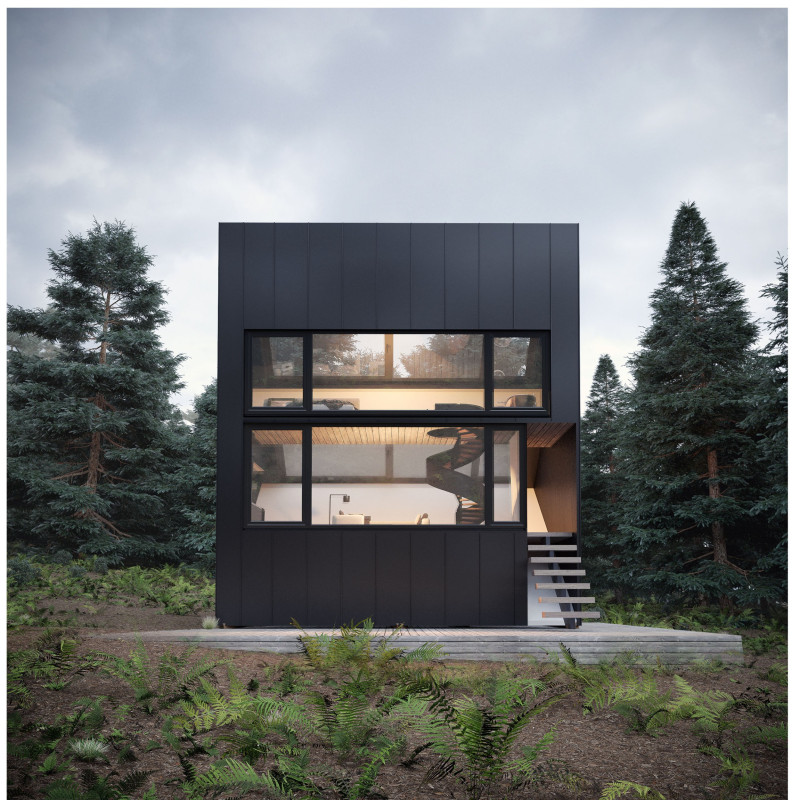5 key facts about this project
The design of the tiny house emphasizes the idea of living freely in nature, supporting a lifestyle that connects residents with their environment. This compact dwelling aims for efficiency and practicality, appealing to those who wish to simplify their lives while still enjoying modern comforts.
Design Inspiration
The exterior of the house draws inspiration from the forms of coniferous trees. This reference to nature is reflected in the facade, which promotes unity between the structure and its surroundings. The design enhances the visual connection to the landscape, enriching the overall experience of the space.
Spatial Organization
The building offers an adaptable layout, with sizes that range from 22 to 32 square meters on the ground floor. This area houses key functions such as a reception room, kitchen, and an upper floor with a bedroom and bathroom. The design maximizes the use of space, ensuring everything needed for comfortable living is included without excess.
Sustainability Features
Sustainability plays an important role in the design philosophy. A rainwater collection and filtration system provides a renewable water source for daily needs. This approach reduces dependence on municipal supplies and encourages conservation. Additionally, water recycling and composting toilet waste into fertilizer highlight a commitment to eco-friendly practices.
Natural Light and Ventilation
Skylights and longitudinal windows are key elements of the design, allowing ample natural light to fill the interior. These features not only provide occupants with views of the sky and stars but also aid in ventilation. The careful placement of these windows creates a bright, welcoming atmosphere that enhances the living experience in a compact space.
One notable detail is the dual-window structure on the roof, which offers unobstructed views of the surroundings. This design choice promotes a deeper connection with the environment while ensuring that natural light floods the interior, making it feel larger and more open.



















































